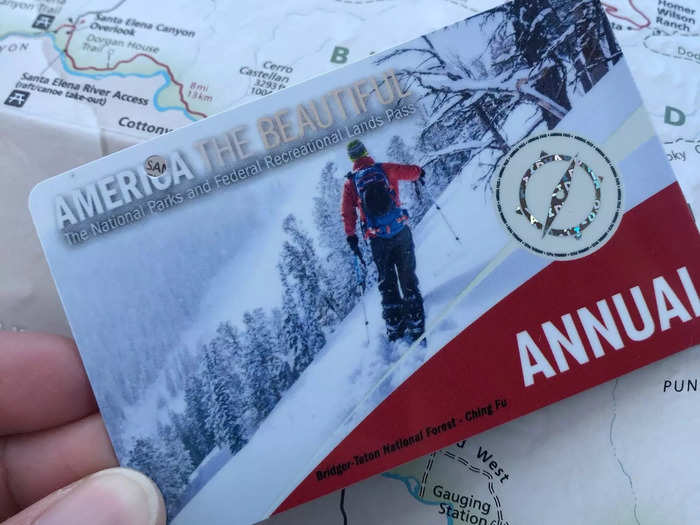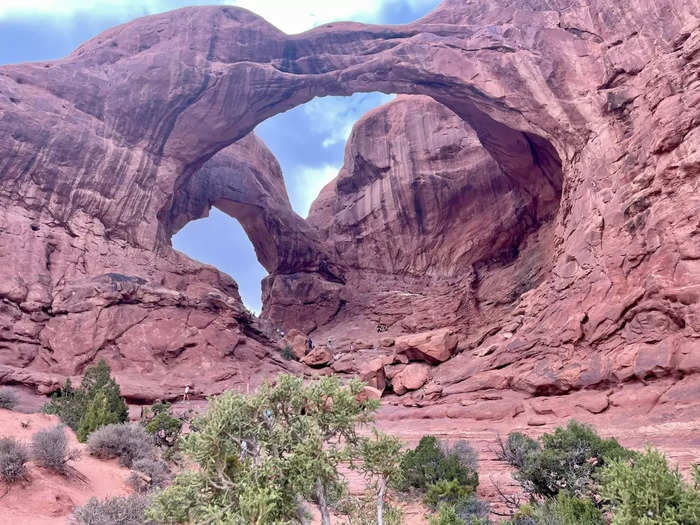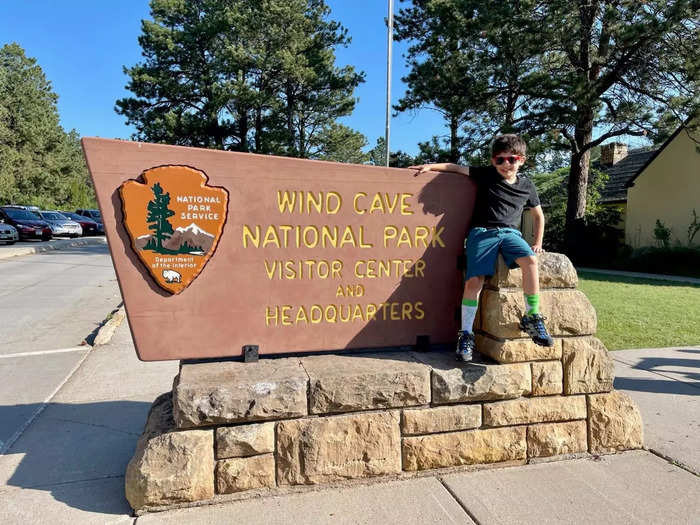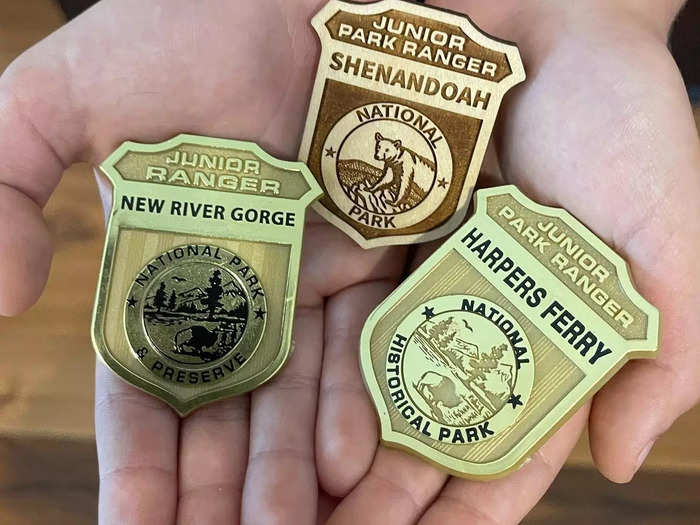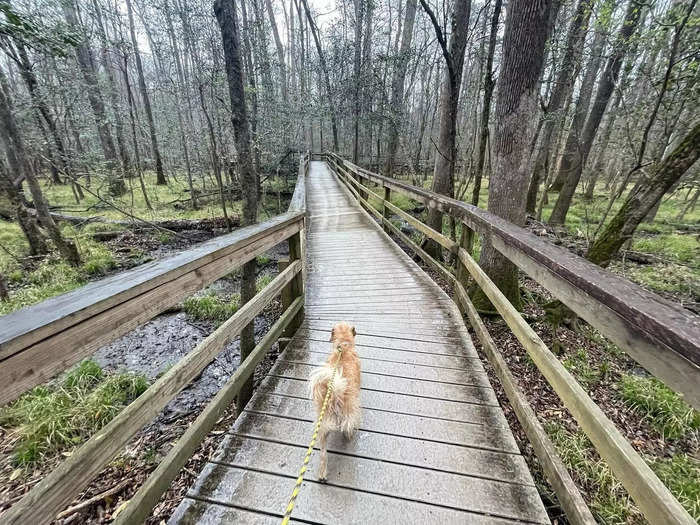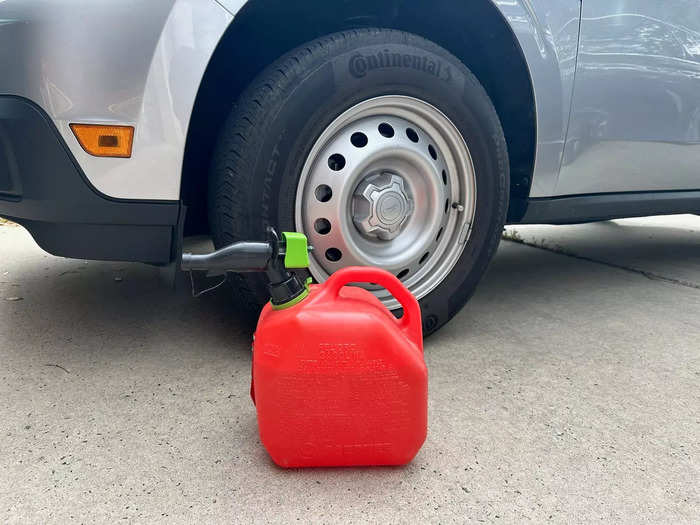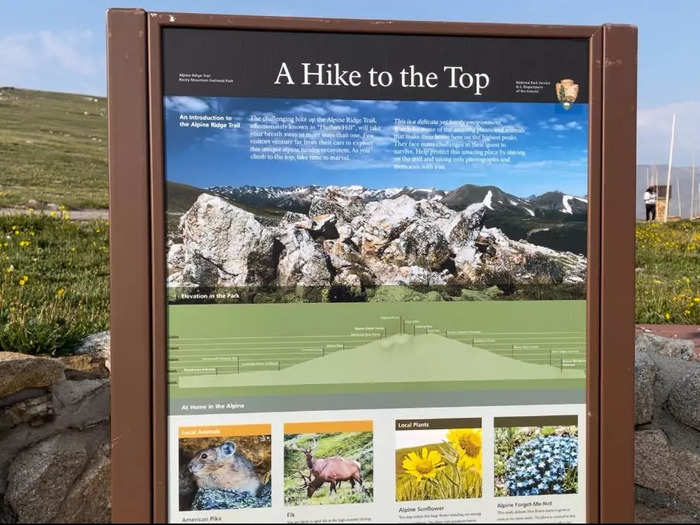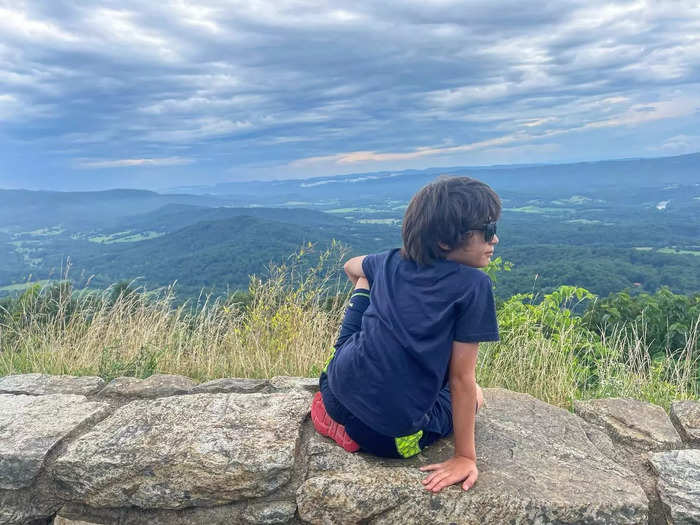I love visiting national parks with my family. Amanda Adler
- Traveling to national parks with my son and dog is a passion of mine, and we've visited 35 so far.
- I tell new visitors to expect crowds of people but limited resources such as food, water, and gas.
My family is on a quest to visit all 63 US national parks.
So far, we've made it to 35 parks with my 10-year-old son, who's been hiking since he was a toddler. We often have our dog with us as well.
Even though I've visited many parks, I'm always learning something new about these remarkable natural wonderlands.
But despite the unique differences that set each destination apart, there are a few things every traveler should know before visiting a national park.
Research is the key to success.
Research park hours, seasonality, trail maps, and entrance fees before visiting a national park Amanda Adler
Like any trip, visiting a national park requires planning.
Be sure to check that the park you'd like to visit is open during your visit, particularly during colder months, and know that many parks have roads and facilities that are closed seasonally.
More popular parks may also require a reservation for entry, which must be made in advance.
Some hikes, such as Angel's Landing in Zion National Park, operate on a lottery system.
Visit in the offseason when possible, but don’t expect a crowd-free experience.
Expect plenty of other tourists in your photos of Utah's popular Arches National Park Amanda Adler
Although you may be picturing wide open spaces and a serene natural getaway, the truth is that your visit to a national park is likely to be a crowded one.
Don't underestimate the popularity of experiencing these beautiful places.
Try to visit during the offseason whenever possible to cut down on crowding and save money on hotels or other accommodations.
Stop by the park's visitor center before heading out on your exploration.
We stopped by the visitor center at Wind Cave National Park in South Dakota Amanda Adler
No matter how much research you've done, you'll want to arrive at the park during visitor-center hours and check in with the park rangers first.
They can provide helpful tips, update you on current trail conditions, and answer questions.
If traveling with kids, engage them with Junior Ranger activities.
Junior Ranger badges are fun to collect. Amanda Adler
The visitor center can also provide Junior Ranger booklets for your kids.
These books are free at most parks and offer a variety of educational and engaging activities themed to the area you're visiting.
Once your kids complete the age-appropriate activities within their booklet, they can return it to the visitor center to be sworn in as official Junior Rangers and receive a commemorative badge.
If you're bringing dogs, check to see if the park you're visiting has a BARK ranger program.
Leashed dogs are welcome at South Carolina's Congaree National Park. Amanda Adler
You'll want to see if the park you're visiting is pet-friendly before bringing your dog.
Many don't allow dogs due to safety concerns, and you'll need to board your pooch before entering.
However, there are several dog-friendly parks throughout the National Park System. At these parks, your pup can become a BARK Ranger by completing a list of tasks.
Dress appropriately and choose the right footwear.
Our hiking shoes helped on muddy trail at New River Gorge National Park in West Virginia. Amanda Adler
Even if you only plan to do a little light sightseeing, dress for adventure.
A short stroll to a viewpoint can quickly turn rocky or muddy and sturdy, water-resistant shoes will always prove worth it in the end.
In addition, pack sunscreen, bug spray, and clothing layers to take on and off throughout your stay. There's no such thing as being overprepared.
Understand that some resources may be limited, so pack the essentials.
This gas can is a souvenir from my visit to Texas. Amanda Adler
Many national parks are in remote areas, so resources are often scarce and far between.
You'll need to pack plenty of essentials, such as water and snacks, and fill your car with gas whenever possible.
After running out of gas on the long desolate road to Texas' Big Bend National Park, I carry an extra gas can just to be safe.
Carry a map and ensure you understand the physical exertion level needed to complete a hike.
We look at trail details before embarking on a hike. Amanda Adler
Cell service is often nonexistent within America's national parks. You'll probably need to carry a physical map and know how to read it.
Maps can also help you understand terrain and elevation and how that impacts the difficulty of any hikes you're considering.
A 1-mile trek might not seem too challenging, but if it's mostly uphill or requires significant rock scrambles along the way, it may prove too difficult after all.
Stay safe, and don't overdo it — especially if you're new to hiking.
We stopped to rest at Shenandoah National Park in Virginia. Amanda Adler
When in doubt, play it safe.
Your first national park visit is a chance to take in the beauty of Mother Nature while testing the waters of your abilities. It's not the time to attempt a bucket-list hike.
Use caution, stick to marked trails, turn back if you're uncertain or uncomfortable, and always make sure someone knows where you are before setting off on your day's adventure.

